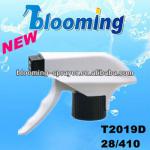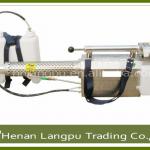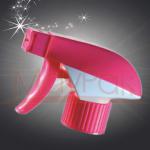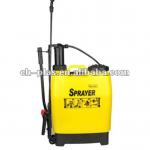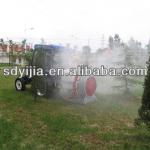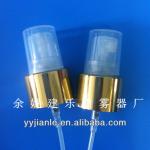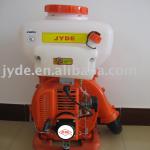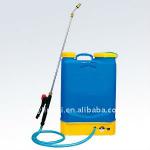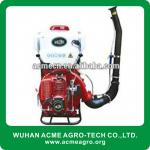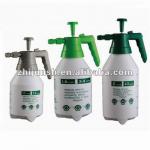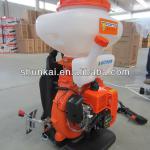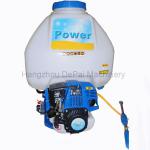WF60-1000L agriculture battery sprayer pump,agricultural spray water pump,agriculture diaphragm pump!
| Type:Sprayers | Place of Origin:Henan China (Mainland) | Brand Name:wanfeng | Model Number:WF60-1000L |
| Sprayer Type:Pump | Usage:Agriculture | Color:blue and yellow | material:stainless steel |
| After-sales Service Provided:Overseas third-party support available | Condition:New | Feature:high prssure |
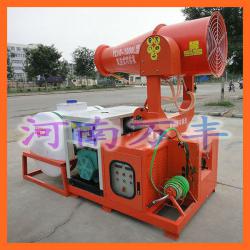
WF60 agriculture battery sprayer pump,agricultural spray water pump,agriculture diaphragm pump
Wanfeng Company is one of the biggest professional agricultural power orchard sprayer manufacturers in china.
Wanfeng sprayershave passed ISO9001 quality management system certification, was certificated by the National Quality Supervision and Inspection Center for Plant Protection Equipment, and obtained the national compulsory 3C certification and promotional certification.
Please useWanfeng sprayerto protect your trees and your property! Mist blowers allow you use less chemicals and still provide effective coverage to protect trees away from insect damage and disease.
1. Advantages and features of Wanfeng air-assisted sprayer:
1. 1.Professional manufacturer with over 20 years' experience, high quality, best service and competitive price, offer multiple choices of product to meet different requirements.
1.2.Strong capability, high & far throw range, wide coverage area, achieve precise volume spraying, high efficiency and spray speed.
1.3.Strong wind ,Strong power and micro fog droplet, when micro wet water mist touching the floating dust, the dust will be knocked down in high speed.
1.4.Flexible power: three-phase 380V and diesel generator power supply optional, we choose famous brand from three-phase 380V and diesel generator power manufacturers, so it is safe and reliable.
1.5.Flexible installation, fixed on the concrete platform or diesel generator-powered vehicles optional.
1.6.Flexible, safe & reliable to use. Remove control & manual control operation. Easily adjust the spray angle of horizontal rotation.
1.7.Compare to tank car, water consumption save 70% ~80%, wide coverage area.
1.8.Easily to move by light truck and other carrier vehicles.
2.Detailed parameters of this wanfeng sprayer:
2.1.Main components
Main components include the main skeleton framework, gasoline-generator systems, special sprayer with shaft flow air-supply machine, motor with pump-equipped, rotating control device, hand-hold remoter, and the acid-resistant pesticide container.
2.2.Working scenes
1. polishing the swinging strut
2.&4&5. making the little accessories
3.checking the fan blade
6. sparying paint
2.3. The chart of technical Parameters
| Model | WF80 | WF60 |
| Dimensions | 1550 x 1200 x 2200mm | 1250 x 1000 x 2000mm |
| Mating power | 5-7kW gasoline generator set | 5-7kW diesel generator sets |
| Spray flow | 6-18L/min | 6-18L/min |
| Range(static wind condition) | Level:32-42m Plumb:20-25m | Level:35-45m Plumb:22-28m |
| Spray spectrum | 50-150um | 50-150um |
| Pitch angle(fan) | -10°~90° | -10°~90° |
| Rotation angle(fan) | 360°back and forth | 360°back and forth |
| Operating efficiency | 200-250mu/hour(1mu=666.67 square meter) | 200-250mu/hour(1mu=666.67 square meter) |
| weight | ≈380kg | ≈420kg |
3. Application Area of Wanfeng sprayer:
3.1.Application
We provide a comprehensive technology for dust suppression and odour control for a wide range of industries.
Fields of applications include building and demolition sites, recesses and inert recycling systems, cement factories and concrete production plants, construction of roads and tunnels, steel factories and compost production plants, wood processing plants, solid urban waste landfill sites and transfer, mining and quarrying, environmental remediation and ports and shipping sites etc.
3.2. Working spot
Spray application:
One of the more common forms of pesticide application, especially in conventional agriculture, is the use of mechanical sprayers. Hydraulic sprayers consists of a tank, a pump, a lance (for single nozzles) or boom, and a nozzle (or multiple nozzles). Sprayers convert a pesticide formulation, often containing a mixture of water (or another liquid chemical carrier, such as fertilizer) and chemical, into droplets, which can be large rain-type drops or tiny almost-invisible particles. This conversion is accomplished by forcing the spray mixture through a spray nozzle under pressure. The size of droplets can be altered through the use of different nozzle sizes, or by altering the pressure under which it is forced, or a combination of both. Large droplets have the advantage of being less susceptible to spray drift, but require more water per unit of land covered. Due to static electricity, small droplets are able to maximize contact with a target organism, but very still wind conditions are required.
Spraying pre- and post-emergent crops
Large self-propelled agricultural 'floater' sprayer, engaged in pre-emergent pesticide application
Self-propelled row-crop sprayer applying pesticide to post-emergent cornTraditional agricultural crop pesticides can either be applied pre-emergent or post-emergent, a term referring to the germination status of the plant. Pre-emergent pesticide application, in conventional agriculture, attempts to reduce competitive pressure on newly germinated plants by removing undesirable organisms and maximizing the amount of water, soil nutrients, and sunlight available for the crop. An example of pre-emergent pesticide application is atrazine application for corn. Similarly, glyphosate mixtures are often applied pre-emergent on agricultural fields to remove early-germinating weeds and prepare for subsequent crops. Pre-emergent application equipment often has large, wide tires designed to float on soft soil, minimizing both soil compaction and damage to planted (but not yet emerged) crops. A three-wheel application machine, such as the one pictured on the right, is designed so that tires do not follow the same path, minimizing the creation of ruts in the field and limiting sub-soil damage.
Post-emergent pesticide application requires the use of specific chemicals chosen minimize harm to the desirable target organism. An example is 2,4-Dichlorophenoxyacetic acid, which will injure broadleaf weeds (dicots) but leave behind grasses (monocots). Such a chemical has been used extensively on wheat crops, for example. A number of companies have also created genetically-modified organisms that are resistant to various pesticides. Examples include glyphosate-resistant soybeans and Bt maize, which change the types of formulations involved in addressing post-emergent pesticide pressure. It is important to also note that even given appropriate chemical choices, high ambient temperatures or other environmental influences, can allow the non-targeted desirable organism to be damaged during application. As plants have already germinated, post-emergent pesticide application necessitates limited field contact in order to minimize losses due to crop and soil damage. Typical industrial application equipment will utilize very tall and narrow tires and combine this with a sprayer body which can be raised and lowered depending on crop height. These sprayers usually carry the label ‘high-clearance’ as they can rise over growing crops, although usually not much more than 1 or 2 meters high. In addition, these sprayers often have very wide booms in order to minimize the number of passes required over a field, again designed to limit crop damage and maximize efficiency. In industrial agriculture, spray booms 120 feet (40 meters) wide are not uncommon, especially in prairie agriculture with large, flat fields. Related to this, aerial pesticide application is a method of top dressing a pesticide to an emerged crop which eliminates physical contact with soil and crops.
Air Blast sprayers, also known as air-assisted or mist sprayers, are often used for tall crops, such as tree fruit, where boom sprayers and aerial application would be ineffective. These types of sprayers can only be used where overspray—spray drift—is less of a concern, either through the choice of chemical which does not have undesirable effects on other desirable organisms, or by adequate buffer distance. These can be used for insects, weeds, and other pests to crops, humans, and animals.[3] Air blast sprayers inject liquid into a fast-moving stream of air, breaking down large droplets into smaller particles by introducing a small amount of liquid into a fast-moving stream of air.[4]
Foggers fulfill a similar role to mist sprayers in producing particles of very small size, but use a different method. Whereas mist sprayers create a high-speed stream of air which can travel significant distances, foggers use a piston or bellows to create a stagnant area of pesticide that is often used for enclosed areas, such as houses and animal shelters.[5]
Spraying inefficiencies [edit]In order to better understand the cause of the spray inefficiency, it is useful to reflect on the implications of the large range of droplet sizes produced by typical (hydraulic) spray nozzles. This has long been recognized to be one of the most important concepts in spray application (e.g. Himel, 1969[6]), bringing about enormous variations in the properties of droplets.
Historically, dose-transfer to the biological target (i.e. the pest) has been shown to be inefficient.[7] However, relating "ideal" deposits with biological effect is fraught with difficulty[8]), but in spite of Hislop’s misgivings about detail, there have been several demonstrations that massive amounts of pesticides are wasted by run-off from the crop and into the soil, in a process called endo-drift. This is a less familiar form of pesticide drift, with exo-drift causing much greater public concern. Pesticides are conventionally applied using hydraulic atomisers, either on hand-held sprayers or tractor booms, where formulations are mixed into high volumes of water.
Different droplet sizes have dramatically different dispersal characteristics, and are subject to complex macro- and micro-climatic interactions (Bache & Johnstone, 1992). Greatly simplifying these interactions in terms of droplet size and wind speed, Craymer & Boyle[9] concluded that there are essentially three sets of conditions under which droplets move from the nozzle to the target. These are where:
sedimentation dominates: typically larger (>100 μm) droplets applied at low wind-speeds; droplets above this size are appropriate for minimising drift contamination by herbicides.
turbulent eddies dominate: typically small droplets (<50 μm) that are usually considered most appropriate for targeting flying insects, unless an electrostatic charge is also present that provides the necessary force to attract droplets to foliage. (NB: the latter effects only operate at very short distances, typically under 10 mm.)
intermediate conditions where both sedimentation and drift effects are important. Most agricultural insecticide and fungicide spraying is optimised by using relatively small (say 50-150 μm) droplets in order to maximize “coverage” (droplets per unit area), but are also subject to drift.
Sincerely welcome customers both at home and abroad to come to guide,discuss cooperation.

| Packaging Detail:wooden case or paper box |
| Delivery Detail:within 25days after the advise of payment |



